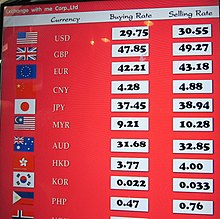
Deciphering the Forex Maze: A Deep Dive into Currency Exchange Rates
Understanding currency exchange rates is crucial in a globalized world where currencies fluctuate, impacting international trade, investments, and travel. In this exploration, we delve into the intricacies of currency exchange rates, shedding light on their mechanisms and implications.
The Basics: What Are Currency Exchange Rates?
At its core, a currency exchange rate is the rate at which one currency can be exchanged for another. This ratio is ever-changing and is influenced by various factors such as economic indicators, geopolitical events, and market sentiment. Exchange rates play a pivotal role in determining the relative value of currencies in the foreign exchange (forex) market.
Forex Market Dynamics: Where Currencies Converge
The forex market is the epicenter of currency exchange, where currencies are bought and sold. Trillions of dollars are traded daily in this decentralized marketplace. Understanding the dynamics of the forex market is essential for anyone involved in international business, investment, or simply exchanging currency for travel.
Factors Influencing Exchange Rates: Unraveling the Complexity
Exchange rates are influenced by a myriad of factors. Economic indicators, interest rates, political stability, and market speculation all contribute to the ebb and flow of currency values. Keeping a pulse on these factors allows investors and traders to make informed decisions in the volatile world of forex trading.
Interest Rates and Exchange Rates: A Symbiotic Relationship
One of the key determinants of exchange rates is interest rates. Central banks set interest rates, impacting the attractiveness of a currency for investors. Higher interest rates often lead to an appreciation of the currency, while lower rates may result in depreciation. Understanding this symbiotic relationship is crucial for anticipating currency movements.
Inflation and Exchange Rates: The Inverse Connection
Inflation rates also play a role in shaping exchange rates. Currencies from countries with lower inflation rates tend to appreciate, as their purchasing power increases. Conversely, currencies from countries with higher inflation rates may depreciate. Investors assess these factors to make strategic decisions in currency markets.
Political Stability and Market Perception: A Delicate Balance
Political stability is a significant factor influencing market perception and, consequently, exchange rates. Countries with stable political environments are often viewed favorably by investors, leading to stronger currencies. On the contrary, political instability, uncertainty, or geopolitical events can trigger currency depreciation.
Trade Balances and Exchange Rates: The Trade-Off
Trade balances, representing the difference between exports and imports, impact currency values. Countries with trade surpluses (more exports than imports) often see appreciation of their currency, while those with trade deficits may experience depreciation. Analyzing trade balances provides insights into potential currency movements.
Currency Pegs and Floating Rates: Different Approaches
Countries adopt different approaches to managing their currencies. Some opt for fixed or pegged exchange rates, tying their currency to another, often a major reserve currency. Others allow their currency to float in the market, its value determined by supply and demand forces. Understanding these approaches is key to navigating the diverse currency landscape.
Exchange Rate Risks: Mitigating and Managing
For businesses engaged in international trade, exchange rate risks are a significant consideration. Fluctuations in currency values can impact the cost of imports and exports, affecting profit margins. Companies employ various hedging strategies, such as forward contracts and options, to mitigate the risks associated with currency volatility.
Linking Knowledge to Action
Stay informed about the latest developments in currency exchange rates at Currency Exchange Rates. This resource offers real-time insights, analysis, and tools to help individuals, businesses, and investors make informed decisions in the dynamic world of forex markets.
Conclusion: Navigating the Currency Landscape
In conclusion, understanding currency exchange rates is akin to deciphering a complex puzzle with numerous interlocking pieces. From economic indicators to geopolitical events, various factors contribute to the ever-changing values of currencies. Navigating this landscape requires a keen awareness of these influences and a strategic approach. With resources like Currency Exchange Rates, stakeholders can stay ahead in the dynamic and interconnected world of global currencies.